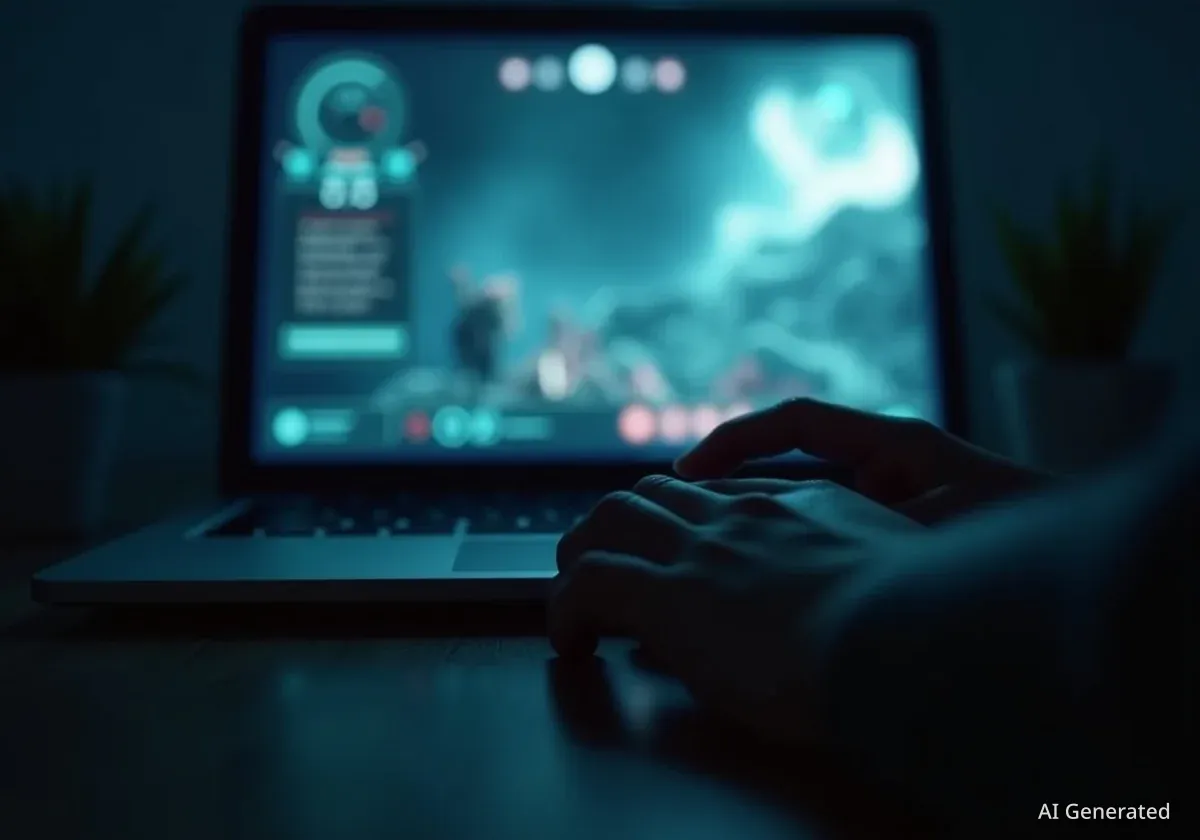A video clip demonstrating a game created with generative artificial intelligence has captured widespread attention online, sparking intense debate about the current capabilities and limitations of AI in game development. The footage, shared by HyperWrite CEO Matt Shumer, presents a disjointed and often nonsensical third-person shooter experience that has been described by viewers as both fascinating and unsettling.
Key Takeaways
- A viral video clip showcases a game prototype created using generative AI tools, highlighting significant visual and logical inconsistencies.
- The project was shared by Matt Shumer, CEO of AI startup HyperWrite, who announced plans to make it open-source.
- The gameplay appears to be a choose-your-own-adventure format, where AI generates scenes based on player prompts, resulting in surreal environmental shifts.
- This demonstration fuels the ongoing conversation about the role of generative AI in creative industries, particularly in complex fields like video game design.
A Glimpse into an AI-Driven World
The video, which runs for a short duration, attempts to simulate a tactical shooter reminiscent of popular titles in the Tom Clancy franchise. It follows a character in SWAT gear navigating what begins as a bus platform. However, the environment is far from stable. Viewers are shown a world that constantly melts and re-forms itself in real-time.
The gameplay is not controlled directly. Instead, periodic prompts appear at the bottom of the screen, suggesting a "choose-your-own-adventure" style of interaction. When a choice is made, the AI appears to generate the subsequent scene on the fly. This process creates a jarring and incoherent visual experience.
For instance, a bus platform seamlessly transforms into a subway station without any logical transition. Cars are depicted underground, and infrastructure elements like HVAC systems are stacked on top of each other in impossible configurations. The game's reality appears to be perpetually collapsing and reassembling itself from a collage of unrelated digital assets.
The Creator and His Vision
The clip was posted on X by Matt Shumer, the CEO of HyperWrite, an AI writing startup. Shumer presented the video with the caption, "AI games are going to be amazing." He later added that he intends to make the project public, describing it as "completely open-source and community-driven." This suggests the demonstration is less of a commercial product and more of a public experiment in generative AI's potential.
Visual Incoherence and Bizarre Logic
The clip is filled with moments that defy conventional game design and logic. Cascading tunnel systems look less like a cohesive level and more like a rapid-fire montage of disconnected images. Transportation signs in the game world consistently misspell words, with multiple signs reading "Uptoon" instead of "Uptown."
Character actions are another source of confusion. When the avatar is prompted to perform basic tasks like shooting a weapon, throwing a grenade, or climbing a ladder, the animations are glitchy and unnatural. These moments resemble the kind of bugs and broken physics often seen in poorly received blockbuster game releases.
One of the most cited examples of the game's flawed logic occurs near the end of the clip. The character, already located deep inside a sewer system beneath the street, is instructed to find cover from an enemy helicopter. The scene ends abruptly on a shot of a random pile of PVC pipe cuttings, leaving the narrative unresolved.
Public Reaction and Industry Context
The reaction online has been a mix of amusement, criticism, and genuine curiosity. Many have compared the clip's aesthetic to low-quality mobile game advertisements that use bizarre scenarios to capture user attention. The video satisfies a certain curiosity but fails to present a coherent or meaningful gameplay experience.
The demonstration arrives at a time when the role of generative AI is a major topic of discussion across all creative fields. While proponents see it as a tool to accelerate development and create new experiences, critics worry about the potential for low-quality, algorithmically generated content to flood the market. This clip is now being used as an example by both sides of the argument.
The video serves as a practical, if unintentional, illustration of the immense challenges that remain in using AI to generate complex, interactive, and logically consistent virtual worlds. It highlights the gap between generating static images or text and creating a dynamic, playable environment.
The Broader Push for AI in Gaming
Shumer's project is not happening in a vacuum. Major players in the technology and gaming industries are investing heavily in generative AI. Companies like Netflix have posted job openings for AI directors with salaries reaching upwards of $840,000, signaling a serious commitment to integrating this technology into their game development pipelines.
The goal is often to use AI to streamline content creation, such as generating environmental assets, character dialogue, or even entire quests. However, as this viral clip demonstrates, the path to creating a seamless and believable game entirely with AI is fraught with technical and creative hurdles.
The key challenges include:
- Maintaining Cohesion: Ensuring that generated environments and narratives are logically consistent and believable.
- Controlling Quality: Preventing the generation of bizarre, glitchy, or nonsensical assets and animations.
- Creating Meaningful Interaction: Moving beyond simple prompts to design engaging and responsive gameplay mechanics.
While the video from HyperWrite may be seen as a failure from a game design perspective, it provides a valuable and public data point. It showcases the raw, unfiltered output of a generative model attempting a complex task, offering a transparent look at where the technology stands today—far from the polished demos often presented by large corporations. The open-source nature of the project may yet provide developers and researchers with a sandbox to explore these challenges further.





